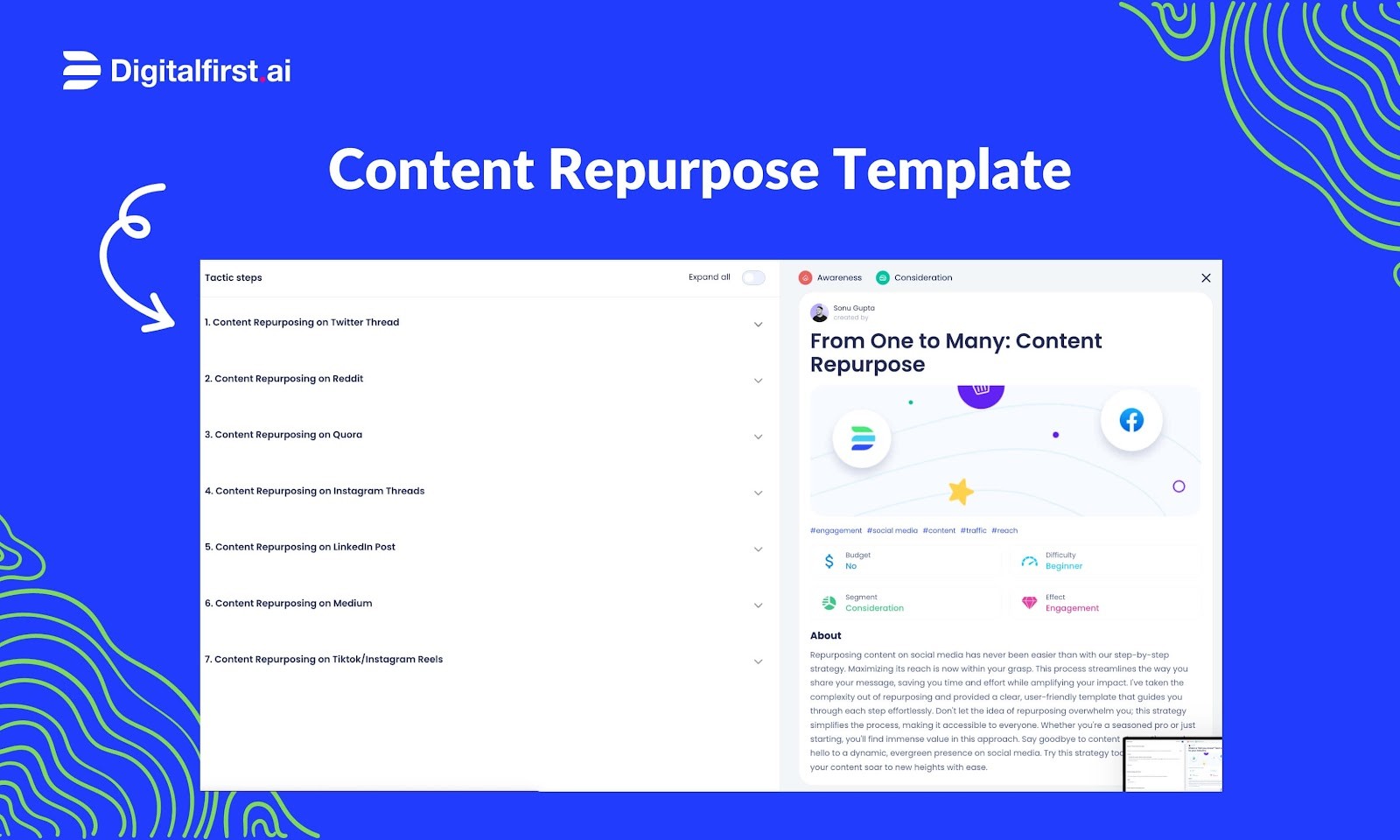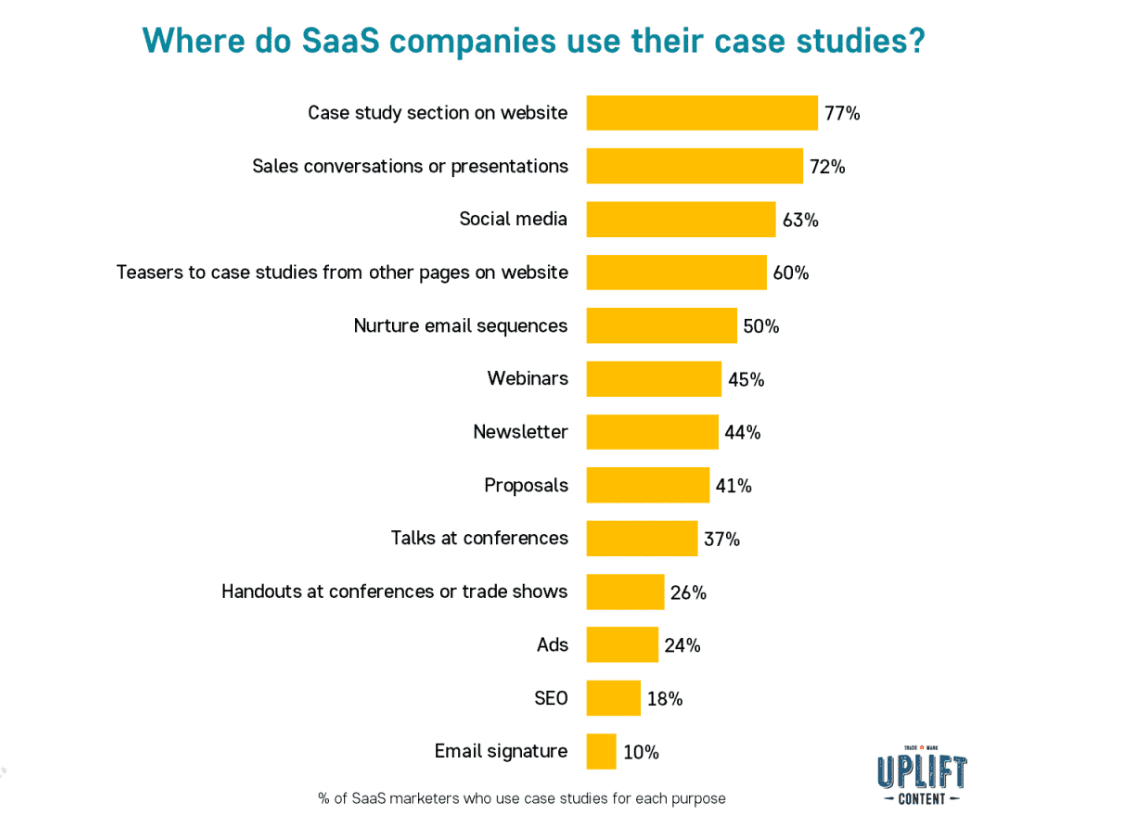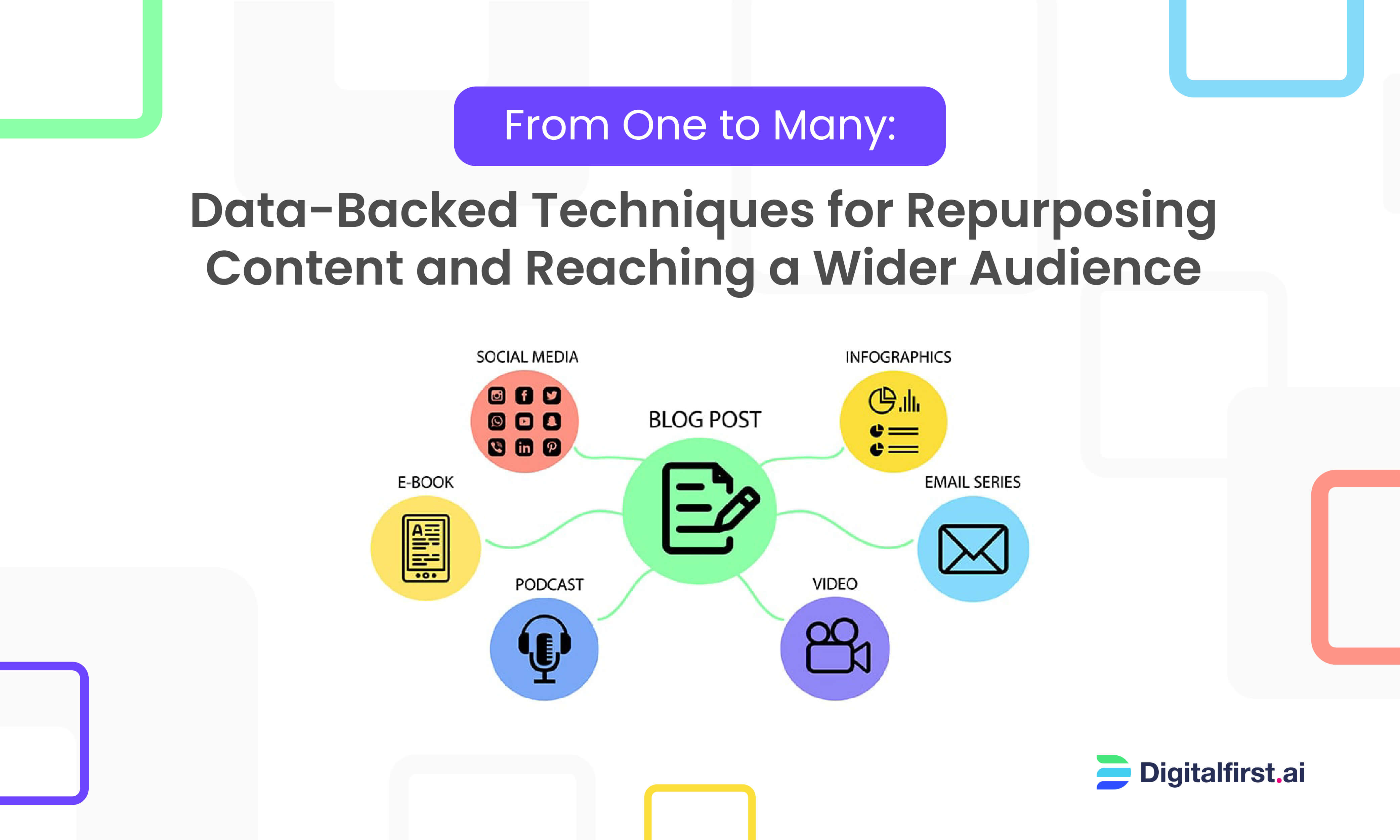How to Supercharge Your Content Distribution Strategy: A Step-by-Step Guide
Drive Conversions and Growth: Implement Effective Content Distribution Strategies to Supercharge Your Funnel Metrics.

Sonu Kalwar
We all understand that reusing your content is a really good way to make it reach even more people.
A new study tells us that 46% of people who advertise think that changing up content they already have works better than making completely new content.
65% also think it's smarter to either make small changes to something they already made or add new things to it instead of making something totally from scratch.
But what exactly is repurposing and how can marketers or content creators make the most of it?
To answer this super interesting question, we looked really hard and discovered some cool ideas for reusing your content.
Exciting, right?
Let's dive deep and start with the basics of understanding how to give your content a cool new life.
Achieve more with less effort: content distribution template here

With Digital First AI's Content Distribution Template, repurposing your content on social media has never been easier.
Our step-by-step strategy simplifies the process, saving you time and effort while maximizing your reach.
Our user-friendly template guides you effortlessly through each step, with fill-in prompts for platforms like Twitter, Reddit, Medium, LinkedIn, and more.
Understanding repurposing content
Before we jump into the creative ways to repurpose your content, let's take a moment to figure out what exactly "repurposing content" means.
Repurposing content is the process of taking your content and making it into something new, or taking an old piece of content and making it better.
For example, if you have a blog post about "how to grow tomatoes in your garden", this could be repurposed into a video tutorial on YouTube.
You could also take that same blog post and turn it into an infographic for use on social media.
In today's world, content is king.
The more you can repurpose your content, the more ways you can reach your target audience. This means your business will have more visibility and more people will know about what you do.
The importance of repurposing content
Many businesses make the mistake of thinking that they only need one kind of content.
However, different formats will attract different audiences and now that we have the basics down—it's time to talk about why repurposing content is important for your business.
Maximizing reach
If you repurpose your content, you can extend its reach beyond the original platform. Repackaging it into different formats will allow you to tap into new audiences and expand your digital footprint.
Increasing engagement
Different people consume content in different ways. By repurposing your content into various formats, you can reach more of them—and ensure that they don't miss out on any important information.
Enhancing SEO rankings
Re-purposing your content can help with search engine optimization (SEO). By creating different versions of the same piece, you increase the chances that it will be linked to and shared socially—both of which contribute to higher search engine rankings.
Content audit
You may have a lot of content on your website, but are you using it all to its fullest potential?
That's why before jumping to repurposing content, you first need to audit your content—to see what you have and how you can use it in new ways. This will help determine whether there are opportunities for repurposing existing material or creating new content.
Here's how you can approach this process:
Identifying high performing content
To begin, analyze your website analytics to pinpoint content that has generated substantial traffic, engagement metrics, and conversions. These pieces are likely to resonate with your audience and have the potential for repurposing. Utilize tools like Google Search Console, Analytics, or SEMrush to identify your high-performing blogs. Focus on the data from the past 6-12 months to gain valuable insights. Here's what you should do:
Use website analytics tools (e.g., Google Search Console, Analytics, or SEMrush)
to identify high-performing content.
Look for metrics such as traffic, engagement, and conversions.
Analyze data from the last 6-12 months for a comprehensive understanding.
Example: Suppose your blog on "Top 10 SEO Techniques" consistently receives high organic traffic, has a low bounce rate, and generates a significant number of conversions. This indicates that it resonates well with your audience and can be repurposed effectively.
Analyze social media metrics
In addition to website analytics, delve into your social media data to uncover posts or articles that garnered exceptional engagement, shares, and comments. This analysis will reveal the types of content that resonate best with your social media audience. Most social media platforms have analytics reports that provide detailed insights. Here's what you should consider:
Utilize social media analytics tools to identify high-performing social media content.
Look for posts or articles with high engagement levels, shares, and comments.
Example: You discover that your Instagram post about "5 Time-Saving Content Creation Tips" received a high number of likes, comments, and shares. This indicates that your audience finds this type of practical advice valuable on social media platforms.
Content gap analysis
Once you've identified your high-performing content, conduct a content gap analysis. This analysis helps you identify topics that are popular among your audience but haven't been extensively covered on your website. Brainstorm ideas on how you can expand these topics into new content pieces. Here's what you should do:
Identify popular topics among your audience that you haven't extensively covered.
Brainstorm ideas on how to expand these topics into fresh, valuable content.
Utilize SEMrush to find gaps in your content strategy compared to your competitors. Identify topics or keywords where your competitors have a strong presence, but you don't.
Example: By analyzing your competitors' content using SEMrush, you discover that they have comprehensive resources on "Voice Search Optimization." Recognizing this gap in your content strategy, you can create content that covers this topic in detail, allowing you to attract more organic traffic and establish yourself as an industry authority.
Creative ways to repurpose content
Once you've identified your high-performing content, think creatively about how to repurpose it into new formats that will be more engaging and relevant for your audience.
Let's look at a few ways to repurpose your high-performing content:
Leveraging social media
Social media platforms provide excellent opportunities for repurposing content and engaging with your audience in new ways.
Some specific ways to repurpose your high-performing content on social media:
Twitter threads/posts
Facebook - 1,200 x 628
Twitter - 1,200 x 628
Twitter (w/ link) - 800 x 418
LinkedIn - 1,104 x 736
LinkedIn (w/ link) - 1,200 x 628
Instagram - 1,080 wide
Pinterest - 800 x 1,200
Stories - 1,080 x 1,920
Google+ - 1,200 x 628https://t.co/2VR5q92mh0— Buffer (@buffer) September 19, 2018
Transform your blog posts into tweet threads or series of tweets. Break down your content into bite-sized chunks and share them as a series of valuable insights. Don't forget to include relevant hashtags and encourage your audience to retweet and engage with your thread.
Instagram carousel
Repurpose your blog posts or articles by breaking them down into visually appealing Instagram posts. Each post can focus on a different section or point, providing bite-sized value to your audience.
LinkedIn post
Summarize your blog posts or articles into LinkedIn posts, addressing the key takeaways. Use relevant hashtags and engage with your connections and industry professionals to drive engagement.
TikTok/Instagram reel

Create short, engaging videos that highlight the key points or tips from your blog posts or articles. These platforms provide a great opportunity to repurpose content for a visually-oriented audience.
Repurpose your content by creating in-depth Reddit posts that provide useful information and insights. Engage with the Reddit community and encourage discussions around your repurposed content.
Quora
Identify popular questions related to your content's topic and craft detailed answers. Link back to your repurposed content for further information. This will position you as an expert and drive traffic to your repurposed content.
Medium
Turn your blog posts or articles into Medium publications by adding additional content, including updated insights and expanded points. The engaged community on this site can discover and engage with these repurposed works.
Example
Let's see how powerful it can be to reuse content by looking at a real-life instance of brands that are already using it effectively:
Turning webinars into video tutorials
If you've run a webinar that was deemed successful, rework it into video tutorials. Break down the recording into shorter segments focused on specific topics or steps—this makes your content more consumable and engaging for future customers.
For Example,
American Chemical Society offers ACS webinars as an authoritative source for your chemistry-related live weekly discussions and presentations. These sessions link you with subject matter experts. The webinars are transformed into video tutorials and made available on YouTube, ensuring access for anyone interested.

Converting case studies into infographics
Use your in-depth case studies to create visually appealing infographics. Highlight key data points, success stories, and results—all while attracting a wider audience. Infographics are highly shareable.
Transforming blog posts into infographics
Turn your blog posts into visual content with infographic formatting. Summarize and condense main points or step by steps, translate them into an easily digestible format to share on social media sites.
For Example,
Consider Uplift Content, a specialized content writing agency focusing on B2B SaaS companies. They excel at creating infographics derived from blog posts. These infographics are seamlessly integrated into the blog itself or utilized across various channels, demonstrating their versatility.

Resources for repurposing content
When you’re repurposing content, it’s helpful to use resources that make the process easier. Repurposing tools and resources can help you create new content from old—saving time and money by not having to start from scratch.
Here are some of the recommended resources during each stage of repurposing:
Digital First AI: An AI-powered marketing tool that generates content and graphics for social media in 25 different languages. It can create content for different digital formats and frameworks and takes less than 15 clicks to generate graphics.
Canva: A user-friendly graphic design tool that allows you to create professional-looking graphics, including infographics, social media posts, and presentations.
Bardeen: This app allows you to create ClickUp tasks from LinkedIn and Instagram profiles. You can automate social media outreach and track potential client information by copying the data into new tasks.
Brandwatch: Helps with content management by scheduling, editing, previewing, and publishing organic and paid content in one place. It also lets you engage with your audience through cross-channel conversations in a customizable inbox.
Elai.io: A video creation tool that uses avatars and templates to produce video content rapidly. It offers access to pre-made templates with various background options and elements, which saves time.
Buffer: Buffer is a powerful social media automation tool designed to simplify the process of managing and scheduling content across multiple platforms.
Measuring success
Lastly, to ensure your repurposing efforts are effective and deliver results, it's important to measure your success using key performance indicators (KPIs). Here are some KPIs to consider:
Lastly, to ensure your repurposing efforts are effective and deliver results, it's important to measure your success using key performance indicators (KPIs).
Here are some KPIs to consider when measuring your repurposing efforts:
Traffic: Measure the increase in traffic to your repurposed content through website analytics.
Engagement: Track the engagement metrics, such as social media shares, comments, likes, or video views, to gauge audience interaction.
Backlinks: Monitor the number of backlinks generated from repurposed content to assess its impact on SEO.
Conversions: Measure the number of conversions, such as email sign-ups or purchases, attributed to your repurposed content.
To measure these metrics accurately, consider using tools such as Google Analytics or specific software designed for measuring content performance (such as Semrush and Ahrefs ).
It’s a wrap
I hope that you can see how reusing content can help your business grow—you'll get four times the exposure, views and leads out of one piece if writing.
So, the next time you ever find yourself wondering how to get more traction for your blog posts—try repurposing them for a different audience.
It'll be a win-win for both your business and your readers.


